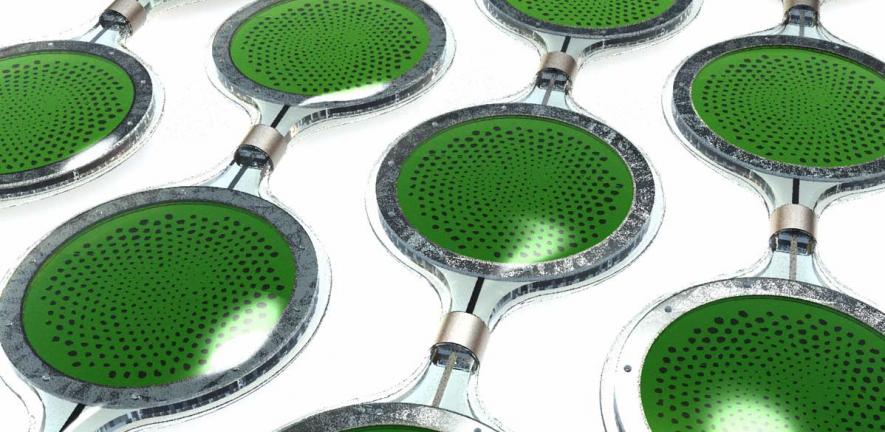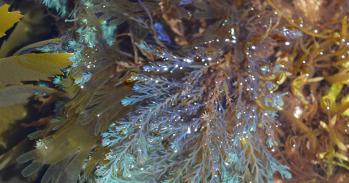
Designers have shaped the way we live today, created iconic products and disrupted industries – but could design also shape scientific research?
Designers have shaped the way we live today, created iconic products and disrupted industries – but could design also shape scientific research?
We have been able to demonstrate that design is also a powerful tool in helping to communicate new processes or ideas in a way that is applicable to the scientific community.
Carlos Peralta
From the car you drive to the clothes you wear, there are few areas in which design hasn’t played an integral role. Now a major research project at the University’s Institute for Manufacturing (IfM) is investigating the potential benefits to science of collaborating with product and industrial designers, especially in the early stages of research.
The ‘Design in Science’ project, which was set up by Dr James Moultrie, Head of the Design Management Group, is being carried out by research associate Dr Alex Driver and doctoral student Carlos Peralta. It was initiated after the publication of the Sainsbury Review, which suggested scientific research might benefit from collaboration with the creative industries, and is funded by the Engineering and Physical Sciences Research Council.
The researchers want to understand to what extent design can play a role in scientific research and how the impact of design input can be affected by the different working practices of designers and scientists. To do this, the study is looking not only at how design can help in commercialising research, by turning it into products and services, but also at its impact on communication and dissemination.
Driver, a mechanical engineer and industrial designer, described how the project got underway: “The literature shows not only that design has a beneficial impact when it comes to developing new technology, but also that the earlier the involvement, the more successful the project. We wanted to explore this within scientific research.”
“Our initial interviews with scientists showed they had quite strong views of what designers could do for them, what the role and function of designers was.
“Most had a very limited experience of professional design disciplines and considered themselves to be designers in some way, whether in terms of designing experiments, or in the creation of new metal alloys for example. For this reason they didn’t feel there was a role for designers in their work.”
“But it was when we were able to demonstrate how designers can contribute to research, that there was often quite a step change in the ability of design to make an impact.”
Already, the project is showing promising results with collaborations that range from stem cell research to biological chemistry.
Green designs
One such example was working alongside the Department of Chemical Engineering and Biotechnology and Department of Plant Sciences on biophotovoltaics. These devices generate energy from the photosynthesis of living micro-organisms such as algae.
The pair helped generate a series of conceptual designs to demonstrate future applications of this technology, which the team are currently prototyping. These designs have since been exhibited as part of the Royal Society Summer Science Exhibition.
“The important thing was not just the design of a potential future application, “explained Carlos Peralta. “The work we did with the team has also inspired different directions of research.”
“The product concepts and prototypes illustrated potential and gave the research team new ideas. We think the project helps pose new questions to which the researchers want to find the answers.”
Communicating complexity
The study has also underlined the power of design in communicating complex ideas.
“Initially some of the scientists thought that a good designer could only contribute if they had a deep understanding of the subject, “said Peralta, a former head of the Product design Department at the Glasgow School of Art.
“We have been able to demonstrate that design is also a powerful tool in helping to communicate new processes or ideas in a way that is applicable to the scientific community.”
This aspect was tested when working with two biological chemists who had an idea for a fluid handling device, designed to carry out a common laboratory task more efficiently. Peralta and Driver helped to develop prototypes to support a funding bid. The biochemists were later awarded £150,000 for further development of the product.
Driver said: “We think we have demonstrated that design has a lot to offer scientific research, both in terms of helping realise the commercial potential of scientific discovery, but also, perhaps more fundamentally, as a catalyst generating new questions and challenges.”
It is hoped that the research could lead to positive benefits for the scientific research community, in terms of opportunity identification, helping to turn research into commercial spin-offs, communicating the impact of university research and inspiring new research directions.
For more information, please contact Dr Alex Driver (ajd95@cam.ac.uk) or Carlos Peralta (cmp60@cam.ac.uk) at the Institute for Manufacturing (www.ifm.eng.cam.ac.uk/).
This work is licensed under a Creative Commons Licence. If you use this content on your site please link back to this page.


